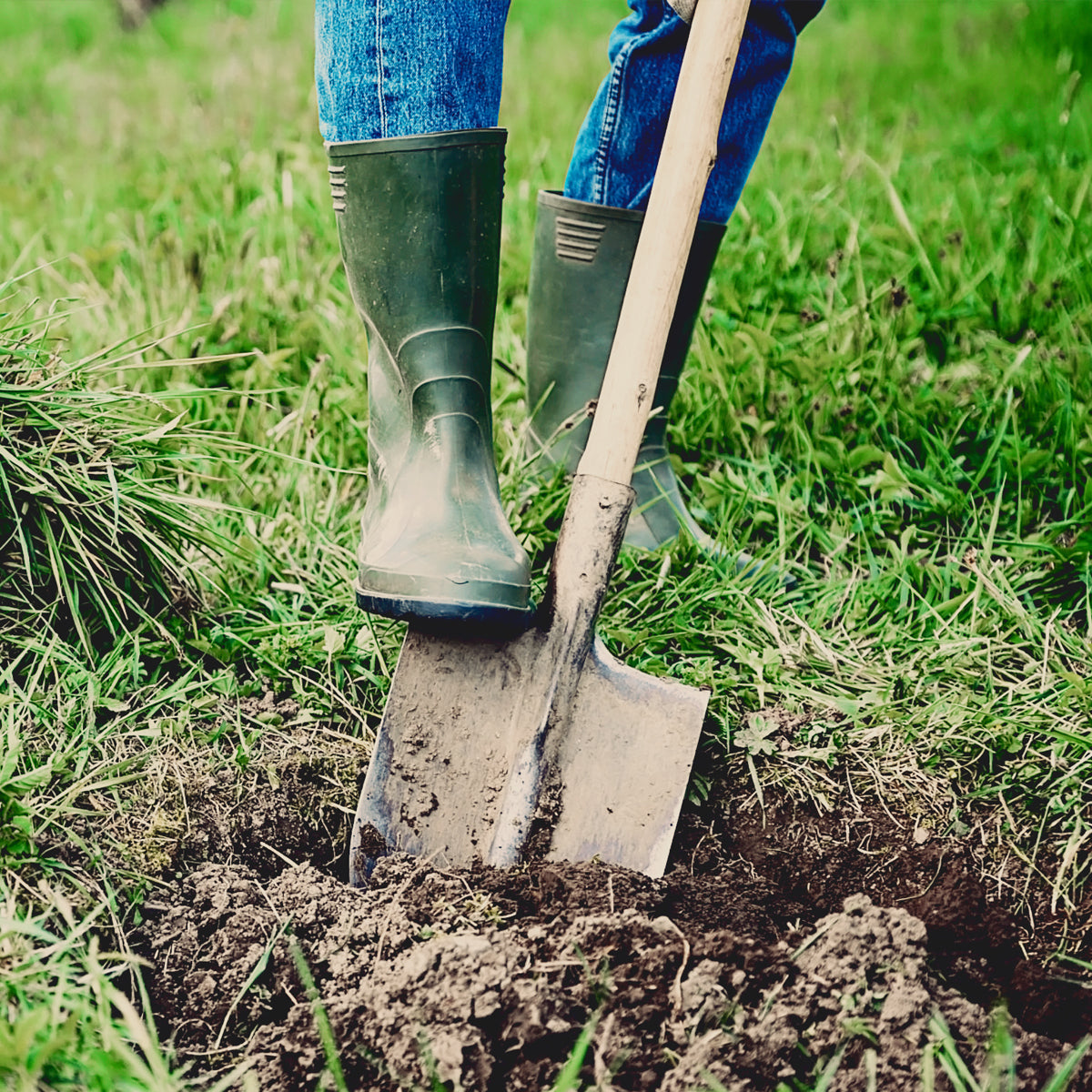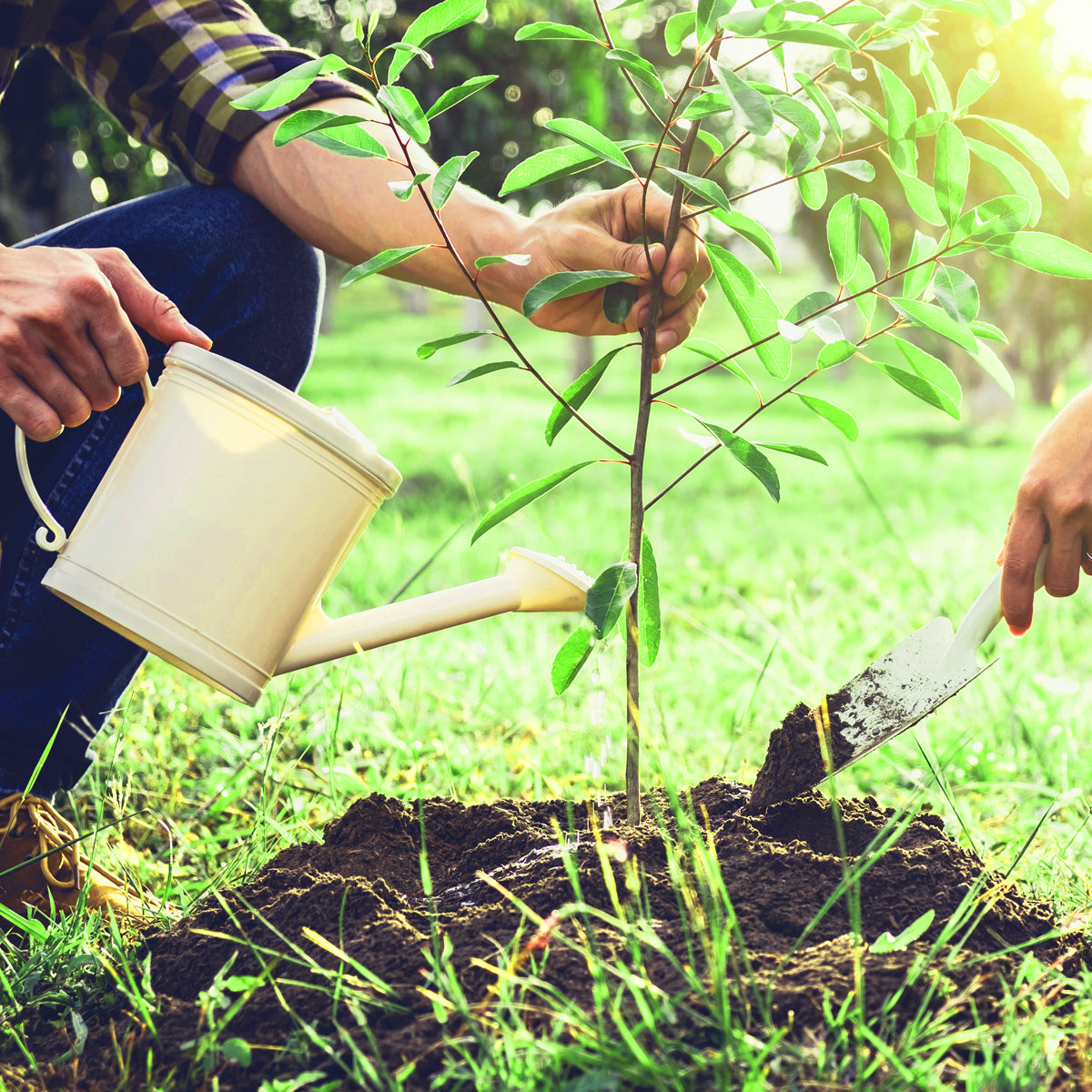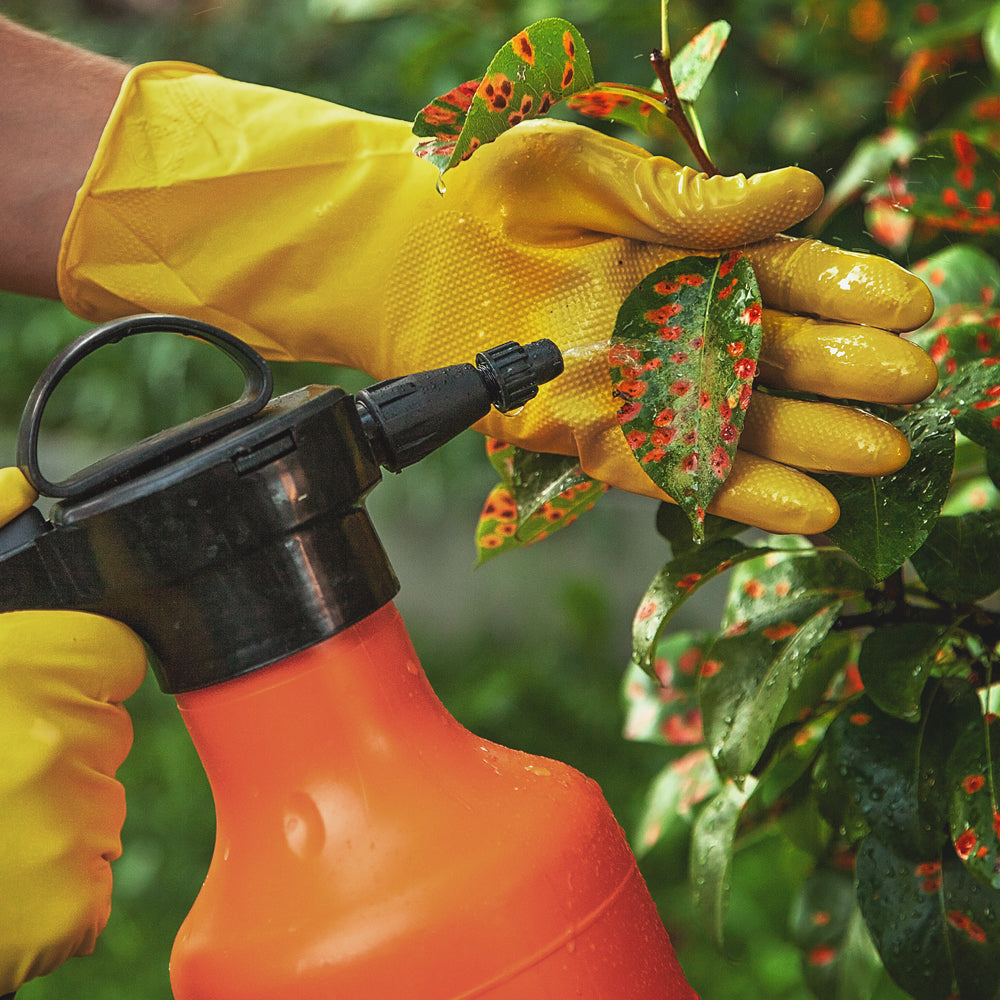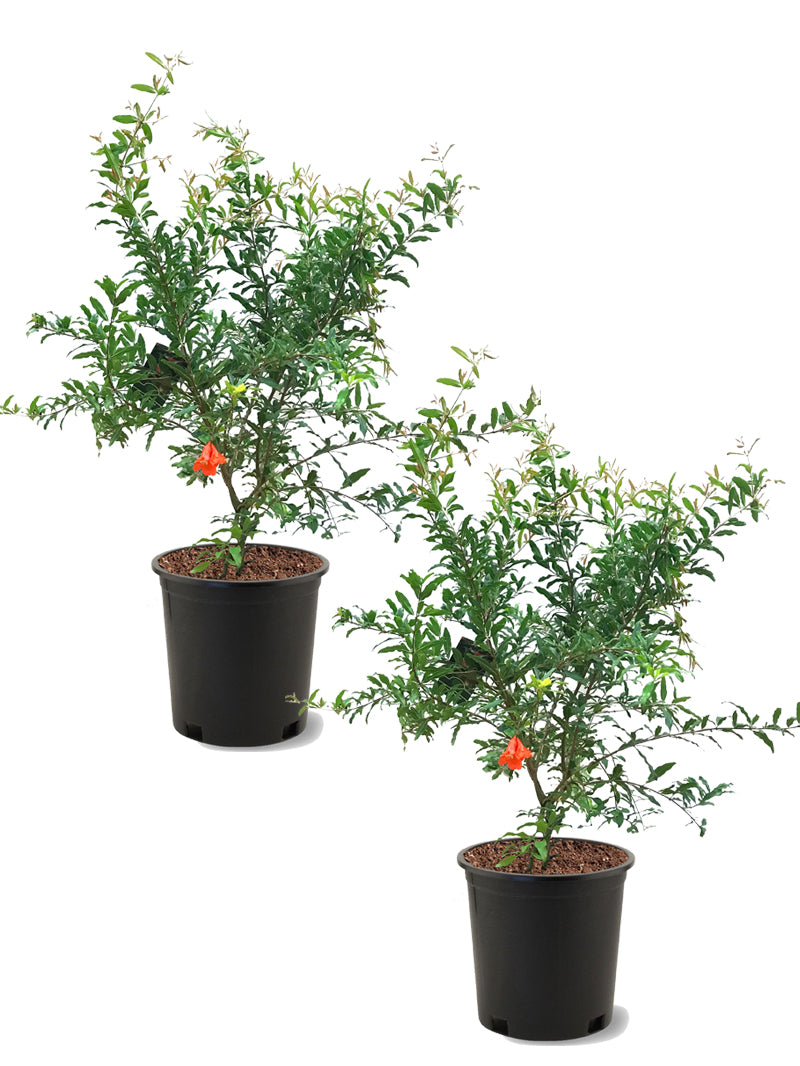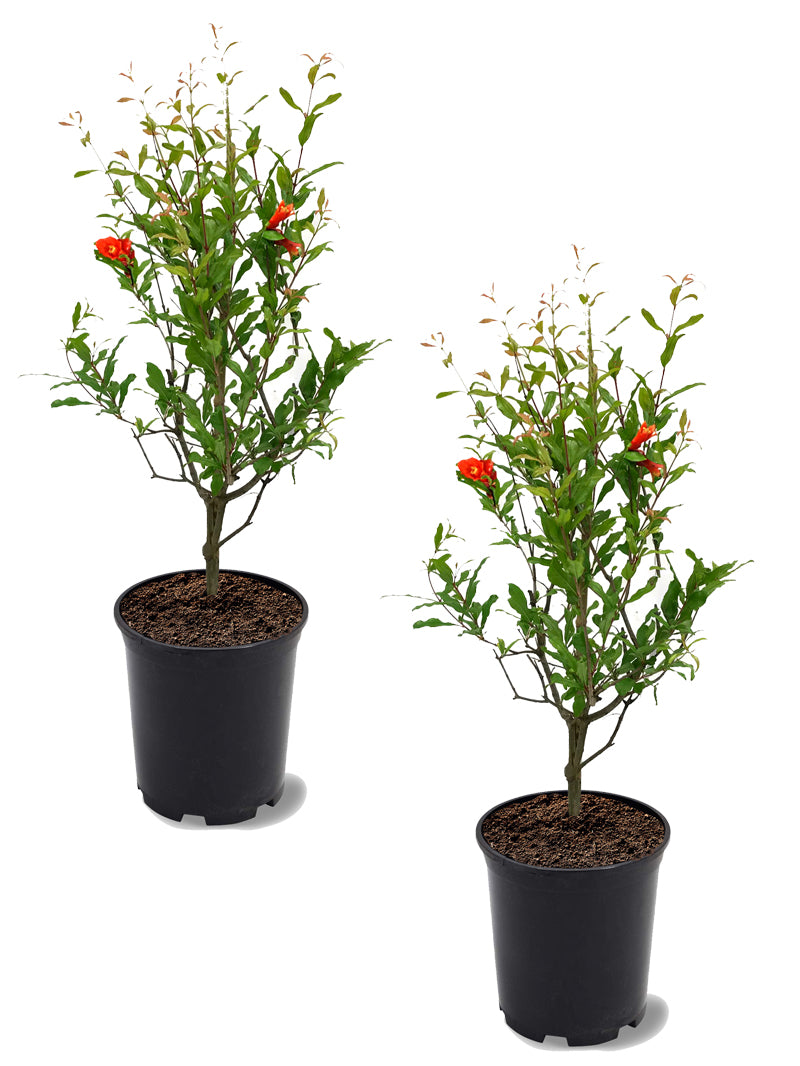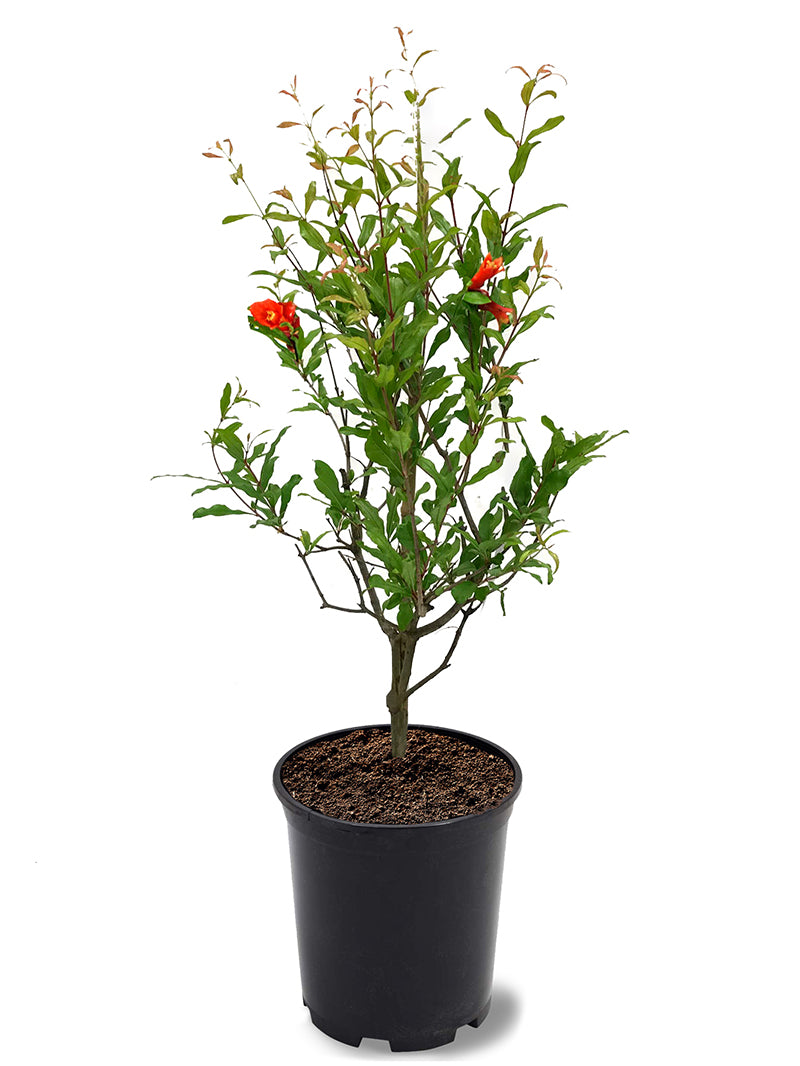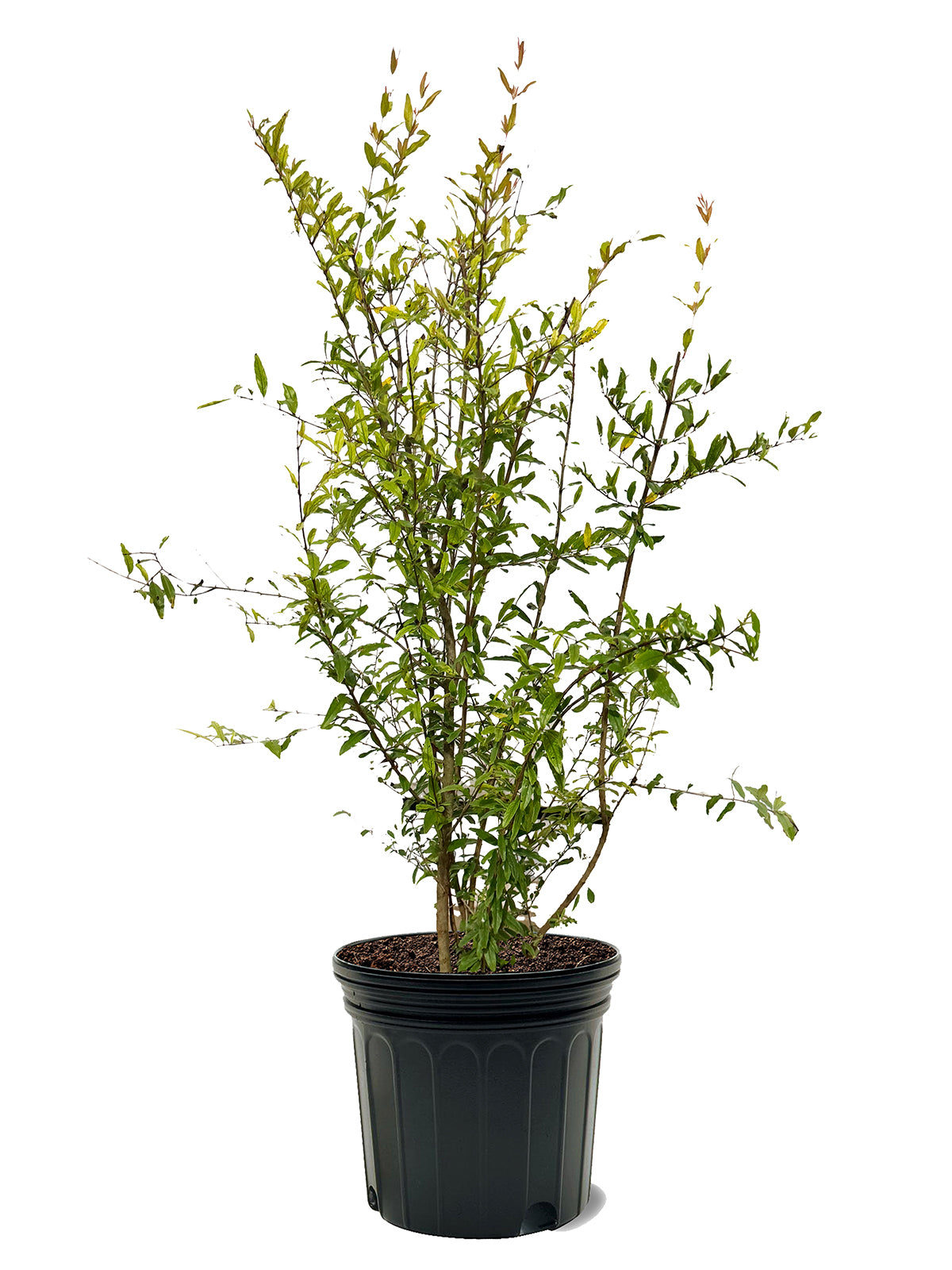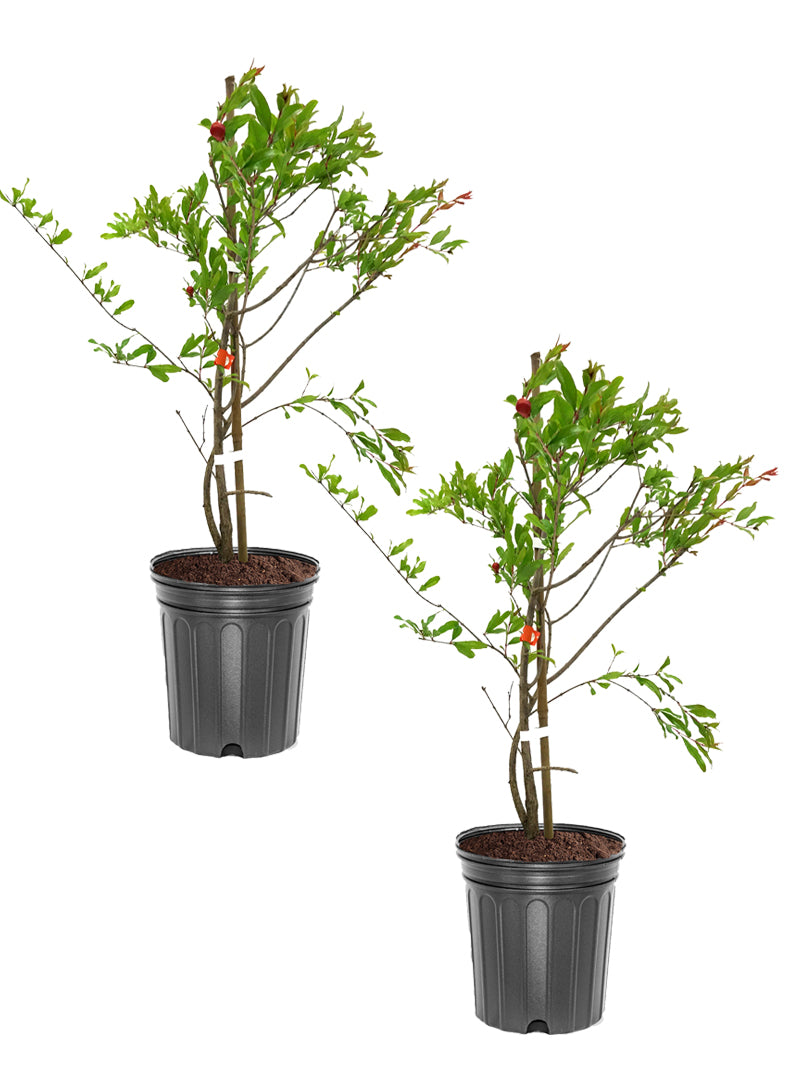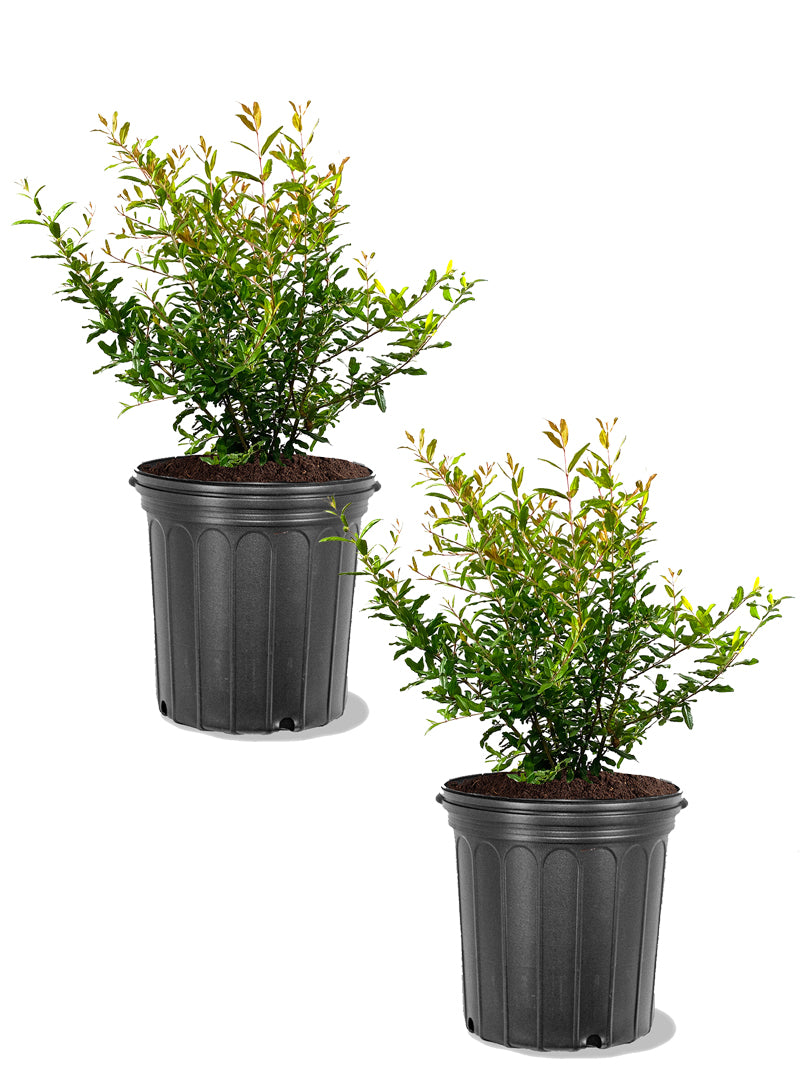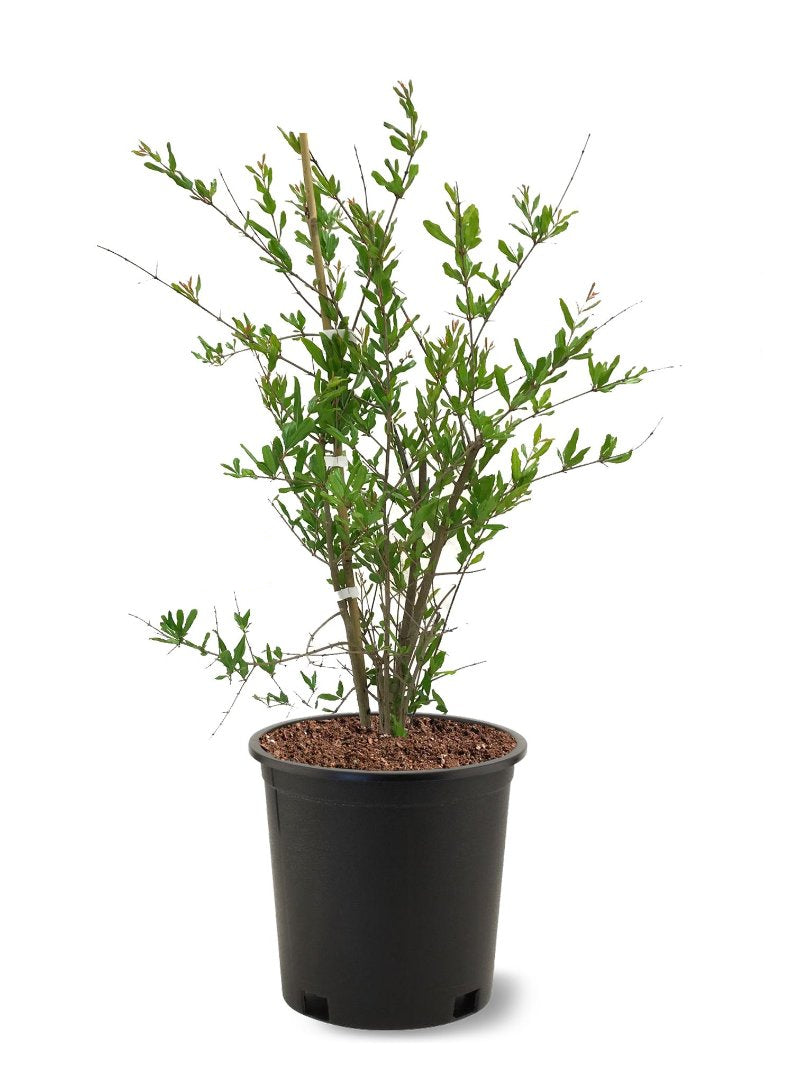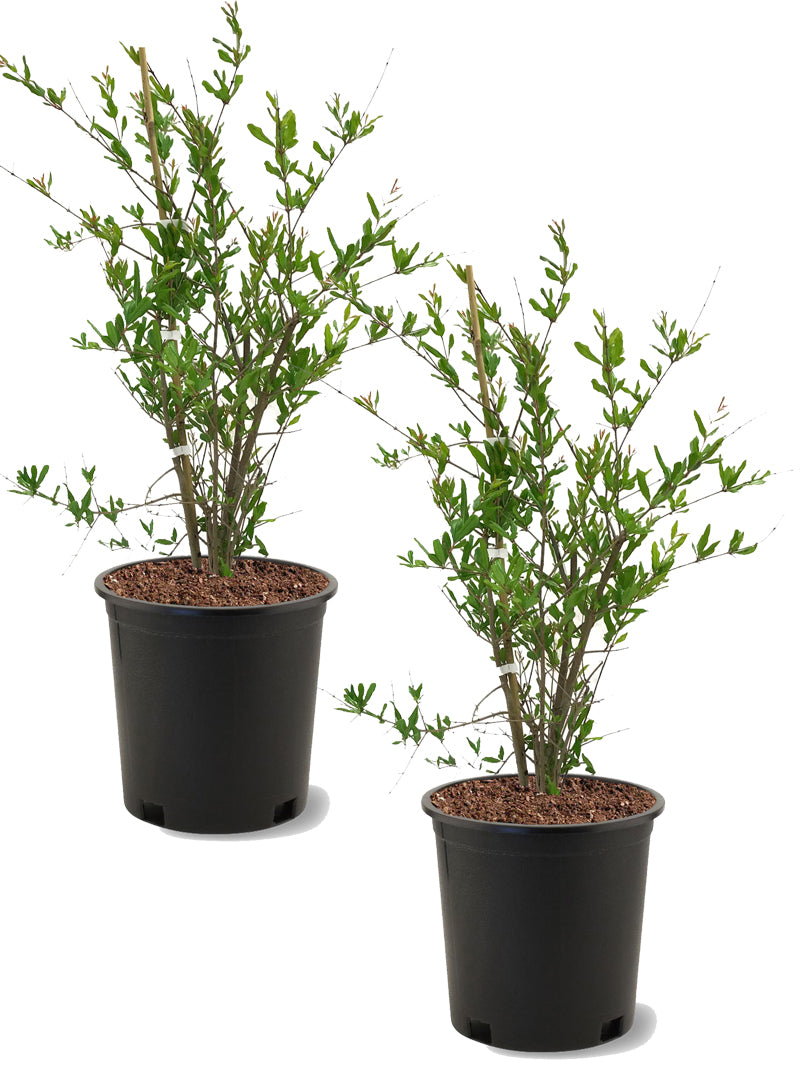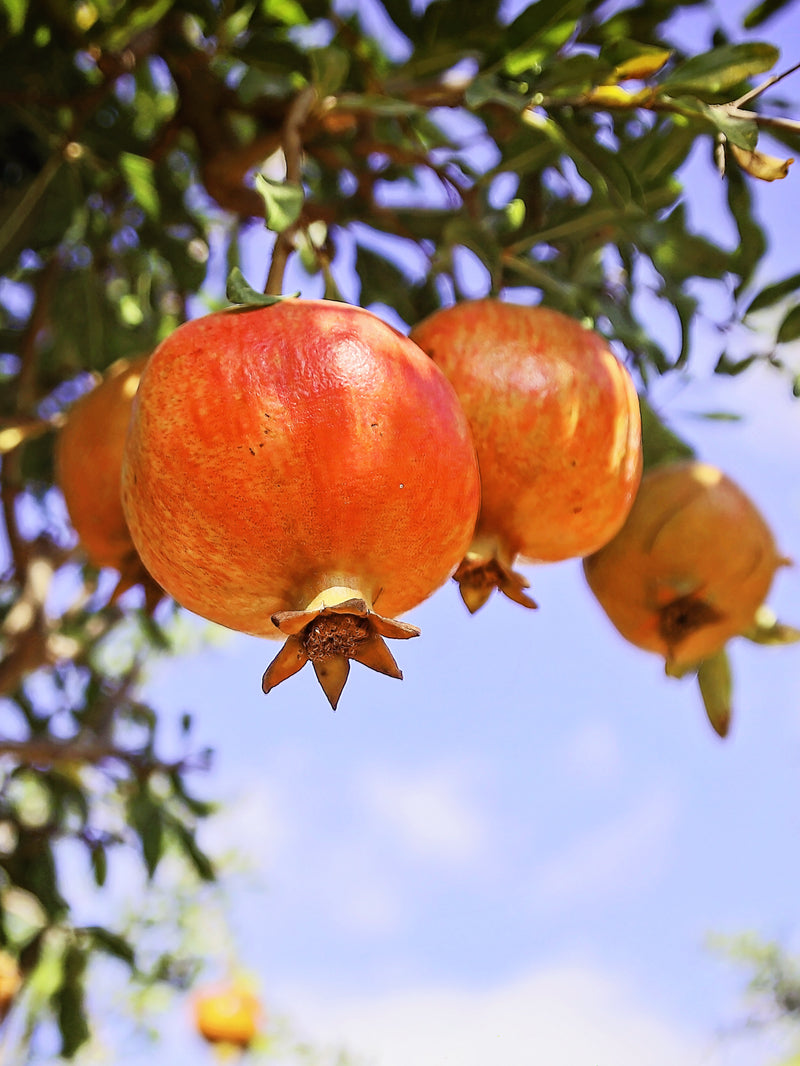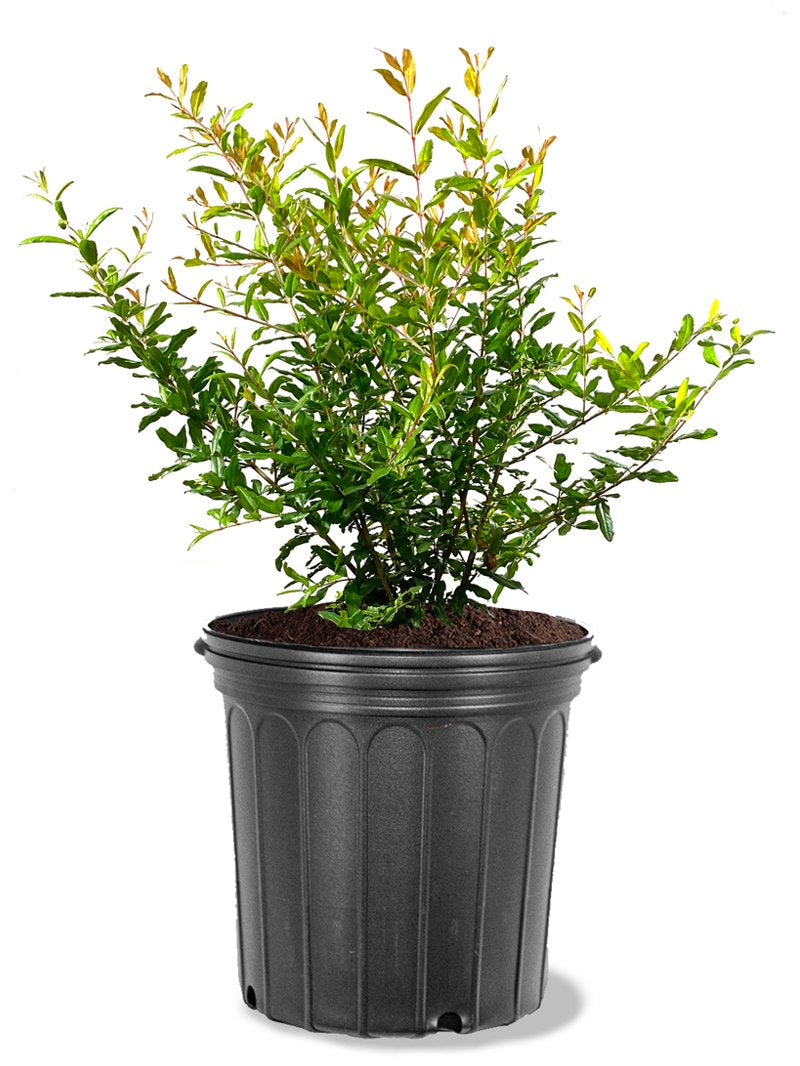
Planning your Pomegranate tree site
Pomegranates are hardy, attractive shrubs or small trees that produce delicious, nutrient-rich fruit. With proper care, they can thrive in a variety of climates and soil types. Follow these guidelines to ensure your pomegranate plants grow healthy and productive. Pomegranates thrive in full sun, requiring at least 6–8 hours of direct sunlight daily for optimal growth and fruit production. When picking a location for your tree, try to find a well-drained area with sandy loam soil. This is the best for pomegranates, but as long as there is good drainage your tree should thrive. Place your tree in full sun for the best growth and production rate. Avoid frost pockets- trees may be damaged by unseasonable frosts. Pomegranates prefer alkaline soil (pH 6.5 to 7.0 or higher). Pomegranates are self-pollinating, meaning a single plant can produce fruit. However, planting multiple plants can improve yields due to cross-pollination.
Soil Prep for Your Pomegranate Tree
It’s time to start digging! First, you will need to dig a hole three times the width of the size of the pot, and just as deep as the root ball. Pomegranates prefer alkaline soil (pH 6.5 to 7.0 or higher). Most average garden soils fall between a pH range of 6.0 to 7.0. Soil preparation should always include a pre-plant soil test. If your soil pH is low, adjust the pH with dolomitic limestone. Spread the limestone evenly over the entire area where the figs will be planted, then till the soil. If possible, till at least a 6-foot by 6-foot area where each bush will be planted at least 8 inches deep.
Pomegranates trees grow best in well-drained, organically-rich soils, but they will grow on many other soil types if drainage is good. In soil with low fertility or compact clay it'll be worth your time to mix in some organic compost to the native soil. They like the soil to hold a good supply of water, especially when the fruits are developing in summer, but not so much water that the soil stays constantly soggy or wet. If your soil has poor drainage, consider planting on a raised mound or in a raised bed to prevent waterlogging, which can cause root rot. Properly prepared soil creates the foundation for vigorous growth and abundant fruit production.
Fertilizer for Pomegranate Trees
Our best advice at planting time: do not fertilize. Young trees are very sensitive to fertilizers. After a few years, if the mature leaves are not deep green and shoot growth is less than a foot per year, apply a balanced fertilizer (such as a 10-10-10) in late winter or early spring.
WHEN TO FERTILIZE POMEGRANATE TREES:
In USDA Zones 8-9: Fertilize 3x a year— in late February, late May and late July/early August.
In USDA Zones 6-7: Further north, fertilize 1x a year in March or after the buds break. This will probably cause early fruit drop, but growth is more important at this stage on their development.
ALL USDA Zones: NEVER fertilize after August as this will start new growth too late in the year and lead to frost damage. In the third year, switch to a low nitrogen fertilizer (first number must be less than 5) and apply only in late February (Zones 8-9) or March (Zones 6-7).
Keep in mind that with persimmons, excessive fertilizing may cause premature fruit drop. Chemical or organic, whatever you may choose makes sure that it contains iron, zinc, manganese, magnesium, molybdenum, copper and boron. These elements are crucial to the plants growth. Application rates may vary. The fertilizer should be spread under the entire canopy, avoiding 5 inches around the trunk.
|
10-10-10 or 10-0-10 with minerals |
1 cup for each year of tree’s life -Max out at 9 cups for mature tree |
|
Espoma Citrus Tone (Organic) |
6 cups for 1 year old 10 cups for 2 year old (4-6 ft) 18 cups for 7-9 ft tree 24 cups for tree over 9 ft |
Water For POMEGRANATE Tree
The first year is a critical time for your new pomegranate. It has not had time to establish itself yet and therefore is not as strong as an older tree. To prevent the tree from dying, it must be watered twice a week on light soil and once a week on clay soil. For best growth and production, pomegranates should receive at least one inch of water a week. During dry spells, water is mandatory. If not properly watered during dry spells, fruit may drop prematurely.
Mulching: Apply a 2–3 inch layer of mulch around the base to retain moisture, regulate soil temperature, and prevent weeds. Keep mulch 2–3 inches away from the trunk to avoid rot.
Pruning POMEGRANATE Trees
Pomegranates can be left alone to grow naturally or trained to grow as a large shrub or mid-size trees of various shapes.
It is not absolutely necessary to prune a pomegranate tree. Pomegranates have thorns, so you will want to wear gloves and thick long sleeves to protect your skin. Pruning of a pomegranate is best done during dormancy; after the risk of frost has passed but before full bloom in the spring. That said, dead or damaged branches or stems can and should be removed as they occur.
Tree Forming a Pomegranate
Where winters are mild, you can train your pomegranates to grow as a tree. In its natural environment, the pomegranate is a multi trunked shrub, and perhaps it's best to allow it to grow as such. That said, lower branches can be removed to form an attractive single or multi trunk tree in the warmer regions of the United States. Either way, we think the number of trunks should be limited from three to six, otherwise fruit production may suffer. Three trunks is most desirable for a tree from, or 4 to 6 for shrub form. After your primary 3 to 6 trunks are established, remove any suckers that emerge from around the base. We only advise single-trunk trees in freeze-free climates. That said, cold hardy varieties, such as Russian 26 Pomegranate, should be safe for single-trunk in Zone 8. When growing less cold hardy varieties in cooler winter areas, multi-trunk shrubs are the best way to be somewhat assured of fruit production. Other than selecting and establishing the three to six trunks and removal of suckers if necessary, avoid any other pruning during the planting year (first year).
In the second year prune prune branches by 1/4 to 1/3 their length, remove crossing branches and leaving 3 to 5 side shoots per branch.From the third year on you will only need to prune your pomegranates lightly each year to encourage fruit production. Pruning your pomegranate heavily will reduce fruit production. Thinning shoots on the end of the branches will increase fruit size and quality on the remaining shoots. Same goes from removing thin or small branches or stems that formed on the inside of the plant, which will open up the middle of the plant to allow light and air to reach the blooms, resulting in increased fruit set.
Frost Protection of Pomegranates
Preparing your pomegranate trees for winter is essential to protect them from cold temperatures and potential frost damage. Whether in the ground or in containers, winterizing helps ensure their health and vitality. Start by applying a layer of organic mulch around the base of the tree, extending it to the drip line. Mulch acts as insulation, retaining soil moisture and protecting roots from freezing temperatures. Water the tree deeply before the first hard freeze, as well-hydrated trees are better equipped to handle winter stress. While you should reduce watering frequency during winter, continue to provide moisture during dry periods.
Avoid heavy pruning in late fall, as this can encourage new growth vulnerable to frost damage. Save necessary shaping or thinning for late winter or early spring. To shield the tree from strong winter winds, which can cause desiccation, install windbreaks or wrap the tree with burlap, focusing on the windward side. If your area experiences late spring frosts, use frost blankets or burlap to protect blossoms. Additionally, monitor soil moisture levels regularly, as winter winds and low temperatures can lead to soil dehydration, even in dormant trees. Periodically inspect your pomegranate trees throughout winter for signs of stress, disease, or pest infestations, addressing any issues promptly to ensure their health through the colder months.
How To Container Grow Pomegranates
Growing pomegranates in containers is an excellent way to enjoy this exotic fruit, especially if you have limited garden space or live in an area with less-than-ideal soil conditions. Pomegranate trees thrive in containers as long as they receive plenty of sunlight and proper care. While container growing is convenient, it requires some patience—pomegranates typically take a few years to produce fruit.
Step 1: Choose the Right Size Container
Pomegranates adapt well to container growing due to their relatively compact root system. Start with a container that is at least 18–24 inches in diameter and has multiple drainage holes. Over time, as the tree matures, transfer it to a larger container, such as a 30-gallon pot or half-barrel, to allow room for growth. Consider placing the container on rolling casters to make it easier to move and follow the sun. For the best results, fill the pot with a well-draining soil mix that includes sand or perlite and is enriched with organic material. Pomegranates prefer slightly acidic to neutral soil with a pH of 6.0–7.0, so test the soil regularly to ensure optimal conditions.
Step 2: Proper Care and Tips
Pomegranates are drought-tolerant but require consistent moisture to thrive, especially during their fruiting season. Water deeply but allow the soil to dry slightly between waterings to prevent root rot. Place the container in a location that receives at least 6–8 hours of direct sunlight daily. Fertilize during the growing season using a balanced, slow-release fertilizer or one formulated for fruit trees. While pomegranates are self-pollinating, planting more than one tree can improve fruit yield and size. Pruning is essential for maintaining the tree’s shape and promoting fruit production. Prune lightly in late winter or early spring, removing dead or crossing branches and any suckers at the base.
Step 3: Protect During the Winter Months
Container-grown pomegranates are more vulnerable to cold temperatures than those planted in the ground. In regions with frost or freezing winters, move the pots to a sheltered area, such as an unheated garage or greenhouse. Wrap the tree with burlap or a frost blanket and add a thick layer of mulch to insulate the soil. In milder climates, position the container in a spot protected from cold winds. Bring the tree back outdoors in spring once the danger of frost has passed and temperatures begin to warm.
With the proper care and attention, your container-grown pomegranate can reward you with beautiful flowers, vibrant foliage, and a delicious harvest for years to come.
POMEGRANATE TREE INSECT & DISEASE CONTROL
Pomegranates have very few diseases. Mites can be controlled with the use of sulfur in June, while scale insects can be controlled with dormant oil during winter when leaves are not present. A neutral liquid copper spray controls leaf spots.
Common pests include aphids, whiteflies, and mealybugs. Control these with insecticidal soap or neem oil.
Diseases such as root rot and fungal leaf spots can occur in overly wet conditions. Ensure good drainage and proper air circulation to prevent issues.
Shop our collection of pomegranate trees and have them shipped right to your door!

